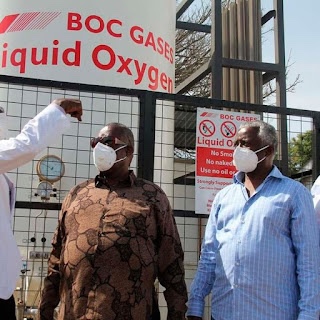Kenyans will have to pay millions of shillings should they go into the ICU, after the price of oxygen shot up, the Nation has learnt.
The cost of filling an 8.5 cubic metre cylinder has tripled, from Sh2,000 to Sh6,500, when one has the cylinder, and without it, the cost has gone up from Sh32,000 to Sh50,000.
A patient in ICU needs up to three cylinders a day. This means that without a cylinder, which is the case with most patients, one will use Sh150,000 a day on oxygen alone.
“Patients are dying because most of them cannot afford the commodity, the prices have gone up and even the hospitals are not in a position to procure the commodity in large quantities because of the prices,” says a senior hospital official who did not want to be named, fearing reprisal.
The hospital confirmed to the Nation that it cannot get oxygen from its supplier because of outstanding arrears.
“It really pains me that I have to see a patient die because they cannot pay a deposit or the hospital is not in a position to procure because it has not paid its arrears with the manufacturer. I broke down last week, losing a patient because we ran out of oxygen,” said the official.
Health care providers across the country use oxygen bought from BOC Ltd, which owns the biggest market share.
Procurement and non-payment for services have been the key driver in the country’s oxygen crisis. A number of hospitals are running dangerously low on supplies and are charging the patients exorbitantly.
Emergency medical care
Many counties have set up oxygen plants, but they still have to buy from the manufacturer to supply them with the oxygen.
And even with the oxygen plants, tendering bottlenecks, poor training of the staff handling the plants, lack of spare parts and poor quality of medical oxygen has rendered some of them unusable.
The country has more than 75 oxygen plants, both for national and county governments, but due to tendering wars, court cases, and breakdowns, many of them are not functional.
The country’s demand for oxygen for Covid-19-related emergency medical care had more than doubled to about 1,000 tonnes, from 410 tonnes last year, and 560 tonnes in January.
Yesterday, 1,814 people were admitted to various hospitals in the country, with about 130 going into ICUs and needing oxygen.
Patients with Covid-19 need oxygen because the virus attacks immature red blood cells, leading to hypoxia, according to a study.
Hypoxia is a potentially dangerous condition in which there is decreased oxygenation in the body’s tissues.
The researchers found that as the disease becomes more severe, more immature red blood cells flood the blood circulation system, sometimes making up as much as 60 per cent of the total cells in the blood. By comparison, in a healthy individual’s blood, immature red blood cells make up less than one per cent.
Shortage of oxygen
“Immature red blood cells reside in the bone marrow and we do not normally see them in blood circulation. This indicates that the virus is impacting the source of these cells, as a result, and to compensate for the depletion of healthy immature red blood cells, the body is producing significantly more of them in order to provide enough oxygen for the body,” said study leader Shokrollah Elahi, an associate professor at the University of Alberta, Canada.
He explained that immature red blood cells do not transport oxygen, however, they are highly susceptible to the coronavirus. And as they are attacked and destroyed by the virus, the body is unable to replace mature red blood cells, therefore diminishing the ability to transport oxygen in the bloodstream.
Medical oxygen has become one of the most important commodities in the fight against Covid-19. Dozens of patients in Kenya have died due to shortage of oxygen.
Another factor is the shortage of oxygen cylinders, with many hospitals having to borrow from one another.
In April, Health Cabinet Secretary Mutahi Kagwe admitted that the availability of oxygen remains low in public health premises, at 16 percent, and where available, the supply is not optimal due to lack of distribution and delivery infrastructure.
“The situation now is that the (gas manufacturing) industry is completely stretched. If we go any further than that, immediate steps will have to be taken,” the CS warned.
“Some of the country’s 75 oxygen plants have stalled due to challenges related to the supply of spare parts. We shall be engaging the counties and the industry to develop common standards for oxygen plants in the future,” Mr Kagwe said.
In April counties had 58 oxygen plants, of which only 42 were functional. BY DAILY NATION
There's no story that cannot be told. We cover the stories that others don't want to be told, we bring you all the news you need. If you have tips, exposes or any story you need to be told bluntly and all queries write to us [email protected] also find us on Telegram

